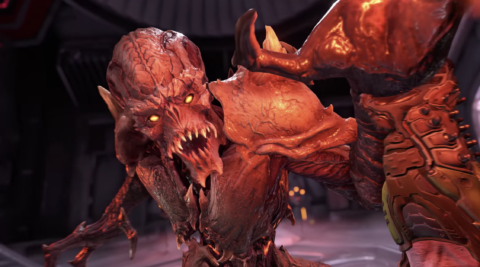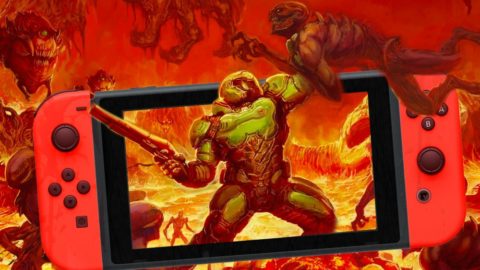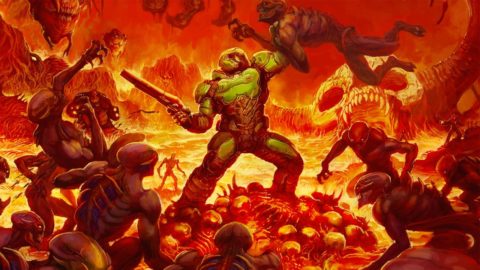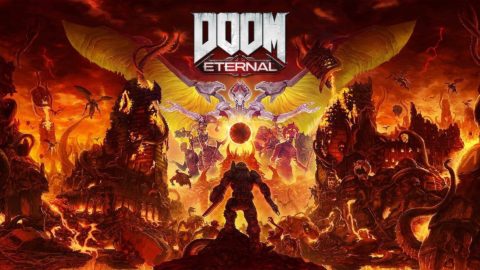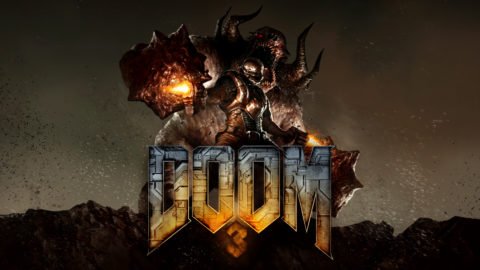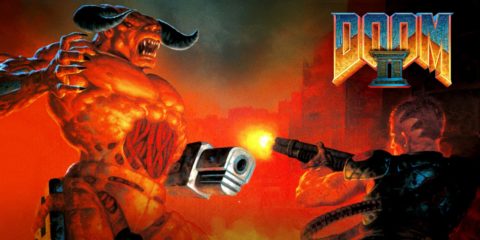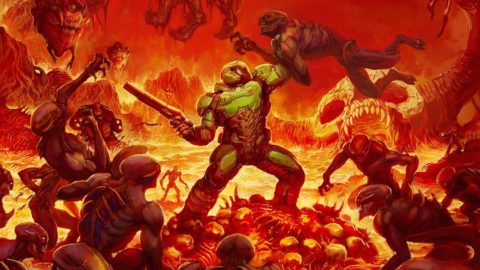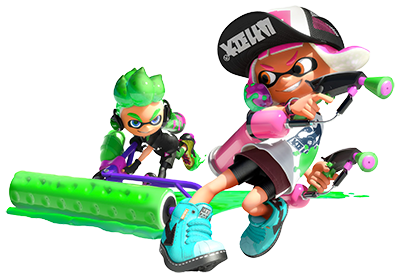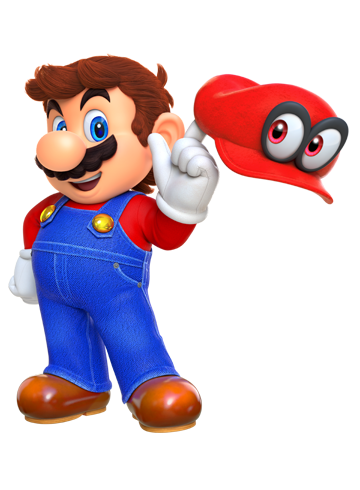DOOM has always been one of those games that fascinated me when I was growing up. Not only because my parents were completely against it, but because it was like nothing I had experienced before – a mature first-person shooter with demonic themes and hellish symbolism. When the classic DOOM trilogy was stealthily released on Switch last month, I was excited to finally indulge in a childhood curiosity after years of experiences with other mature first-person shooters. While its graphics and early 3D engine have definitely aged, the fast-paced action and intuitive gunplay of DOOM (1993) still hold up to this day.
Running and Gunning Towards Hell
Aside from a small paragraph at the end of every episode, there is barely any story-telling in DOOM. All you need to know is that you’re the last space marine alive on Mars who can defend Earth from the growing demonic threat.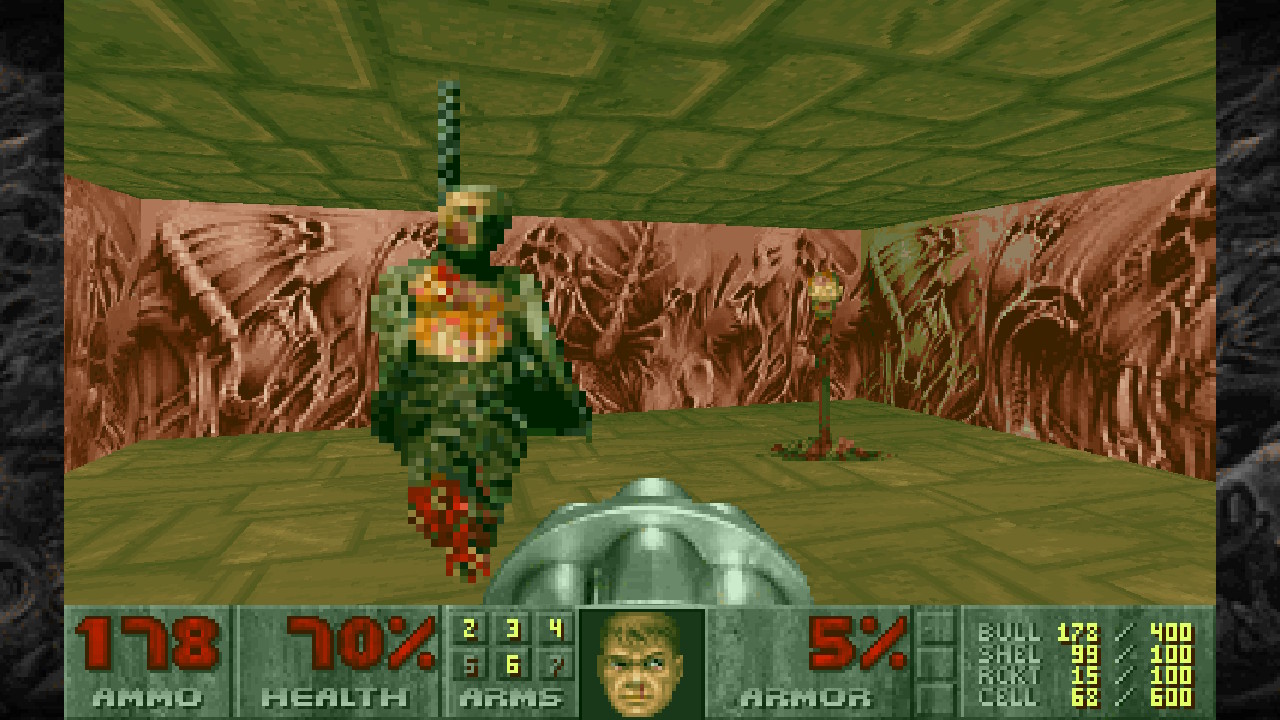
Whenever a discussion about narrative in games happens online, it’s not surprising to see a quote on the subject by John Carmack, the lead programmer of DOOM, making the rounds. Even though Mr. Carmack does acknowledge that some stories in games are done well today, gameplay is still king. Without a focus on a narrative, gameplay is what DOOM is all about. This allows the gunplay and level design to take center stage, hold their own, and stand-out as the defining elements of the DOOM experience.
Knee Deep in Thrilling Gunplay
As far as first-person shooters go, DOOM is widely regarded as a genre-defining title. From the unique-feeling firing modes of the available weapon types to the responsive and gruesome death animations of various enemies, the gunplay feels intuitive and natural. There’s no better feeling than shotgunning groups of imps in the face, or chainsawing your way through a stampeding demon. Energy weapons like the Plasma Rifle and the BFG9000 are satisfying as hell to use and add a delightful flair to the demon-killing. Even with the absence of vertical aiming, the shooting in DOOM feels, quite literally, on point.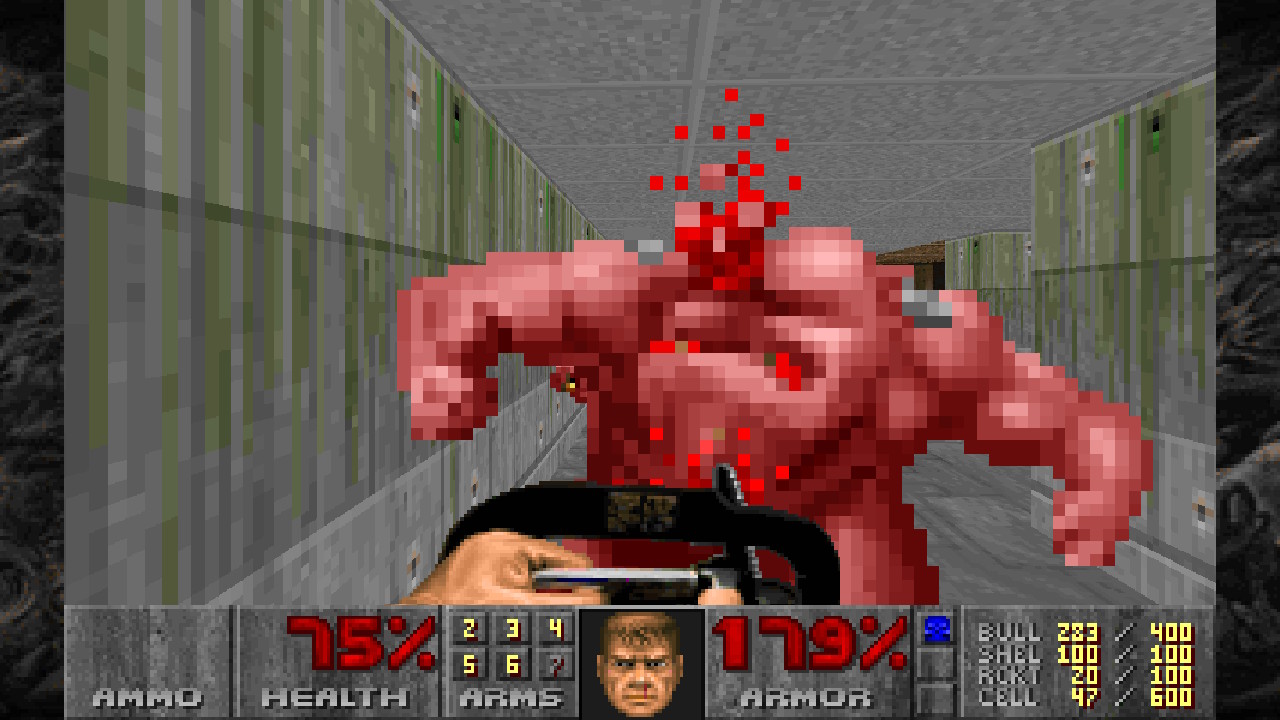 Despite their relatively simple AI, enemies feel like more than just shotgun fodder. Enemies sometimes attack each other in the middle of combat or engage the player differently depending on the circumstances. Pressing a switch might result in hordes of imps spilling out of hidden gates, or a group of demons might corner a player to eat them alive. Enemy designs play an important role in establishing unique identities to each of the demons of DOOM as well. Monsters like the Baron of Hell or the Lost Soul are outright intimidating and threatening in appearance alone. The boss fights at the end of each episode are just as exciting in their designs and challenges as well. Coming across these enemies is one of the most thrilling parts of DOOM because it forces players to switch up their playstyle and use their entire arsenal.
Despite their relatively simple AI, enemies feel like more than just shotgun fodder. Enemies sometimes attack each other in the middle of combat or engage the player differently depending on the circumstances. Pressing a switch might result in hordes of imps spilling out of hidden gates, or a group of demons might corner a player to eat them alive. Enemy designs play an important role in establishing unique identities to each of the demons of DOOM as well. Monsters like the Baron of Hell or the Lost Soul are outright intimidating and threatening in appearance alone. The boss fights at the end of each episode are just as exciting in their designs and challenges as well. Coming across these enemies is one of the most thrilling parts of DOOM because it forces players to switch up their playstyle and use their entire arsenal.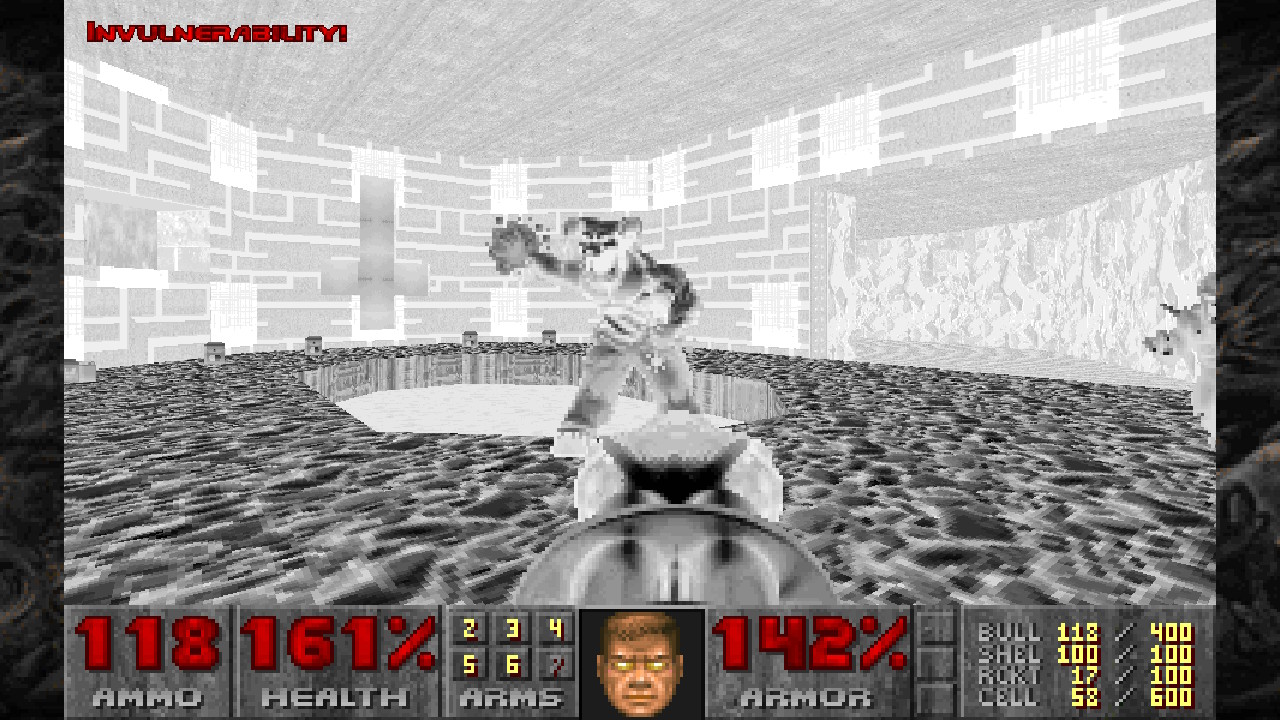
Walking Through The Valleys of Mars, Hell, and Death
DOOM uses a lot of corridors in its level designs, but it is most definitely not a linear corridor shooter. The objective of each level is to reach the exit without dying. It sounds simple enough, but players must also find keys to unlock certain areas and find the exit while surviving the dangerous enemies and hazards inhabiting each level. This allows levels to become sprawling labyrinths of mystery and intrigue instead of uninspired linear hallways and set pieces. Exploring the various paths and finding hidden areas carefully placed throughout the maps can be just as engaging as the gunplay.
Each episode takes place in a different region, and each episode has a distinct layout and feel. Earlier levels take place in various types of human-made facilities while later levels take place in hellish landscapes. Along with the environments, the music selection plays a part in setting the mood of each level. The metal inspired tracks go well with the more action-packed levels just as the more ambient tracks fit the mood for maps that require more exploration. This careful attention to the general theme of each level and episode contributes to a subtle but important part in the overall level design.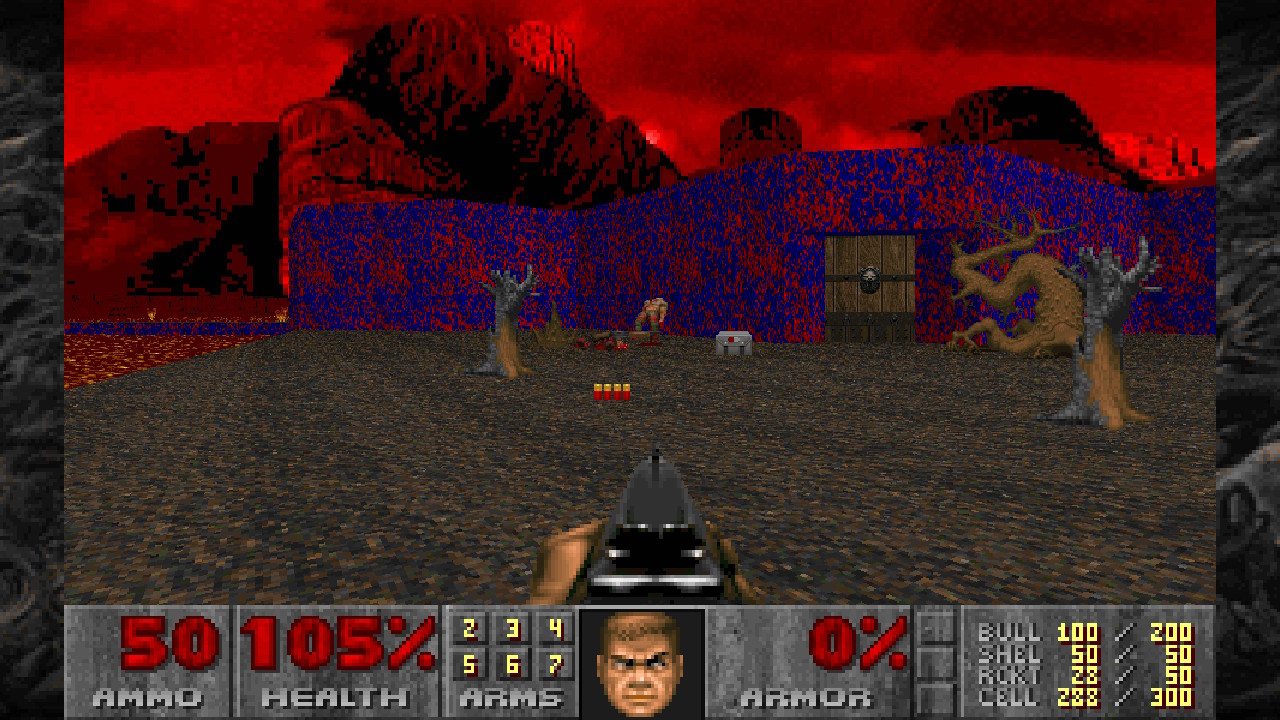 Playing through DOOM doesn’t feel like you’re playing through a collection of individual levels arbitrarily put together to create an episode. The levels that make up each episode feel like they were purposely designed to be experienced as if players were progressing through a larger region. In other words, the levels flow together cohesively like a great concept album or a lovingly crafted playlist. Not every level is a hit, but the sum of their parts make for a greater experience.
Playing through DOOM doesn’t feel like you’re playing through a collection of individual levels arbitrarily put together to create an episode. The levels that make up each episode feel like they were purposely designed to be experienced as if players were progressing through a larger region. In other words, the levels flow together cohesively like a great concept album or a lovingly crafted playlist. Not every level is a hit, but the sum of their parts make for a greater experience.
Hell Is Getting Lost
There were several times where I felt like I explored every inch of a map and had no clue what to do next. Even with the aid of an in-game map that outlines the general layout of the level as it’s explored, it was difficult to know what I needed to do in order to progress.
If players missed a necessary button, key, or hidden area, a lot of back-tracking and blindly checking walls ensues. It would be better if it felt like you were being challenged, but it ultimately feels like players must explore aimlessly until they eventually come across the thing they missed. This can be mitigated by being thorough and deliberate in a playthrough, but that’s antithetical to the fast-paced action the game is known for.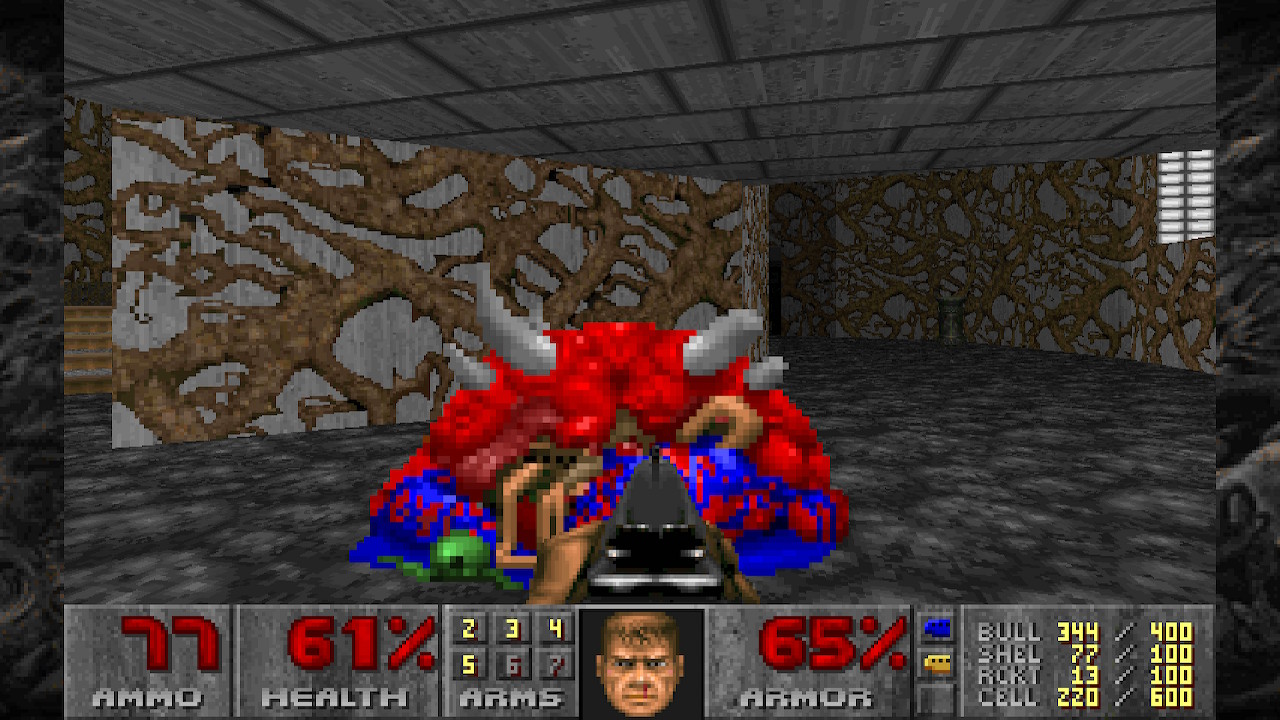 DOOM hasn’t aged too well in the graphical department. Its old textures and early 3D graphics are serviceable, but they are definitely not as pretty as they once were. The bleak textures and simple geometry of the game sometimes adds to the feeling of confusion in certain levels. Some areas feel like they’re being repeated because the graphics make them all blend together in appearance. This experience exacerbates the frustration of aimlessly searching for the next clue, and requires players to interrupt the flow of the game by pulling up the map to make sure they’re not running in circles.
DOOM hasn’t aged too well in the graphical department. Its old textures and early 3D graphics are serviceable, but they are definitely not as pretty as they once were. The bleak textures and simple geometry of the game sometimes adds to the feeling of confusion in certain levels. Some areas feel like they’re being repeated because the graphics make them all blend together in appearance. This experience exacerbates the frustration of aimlessly searching for the next clue, and requires players to interrupt the flow of the game by pulling up the map to make sure they’re not running in circles.
You’re Not Alone in Hell
Aside from the excellent four episodes and more than 30 levels to explore (including secret levels), DOOM also features local multiplayer modes. Up to four players can get together in split-screen and shoot each other up in a classic deathmatch mode. This multiplayer mode was one of the defining elements of DOOM‘s popularity in the 90s, and this port would not feel complete without it. If you and your friends are more of the cooperative type, you can play the entire DOOM campaign together with up to four players in split-screen as well. There’s plenty to do in this game, on your own and with others.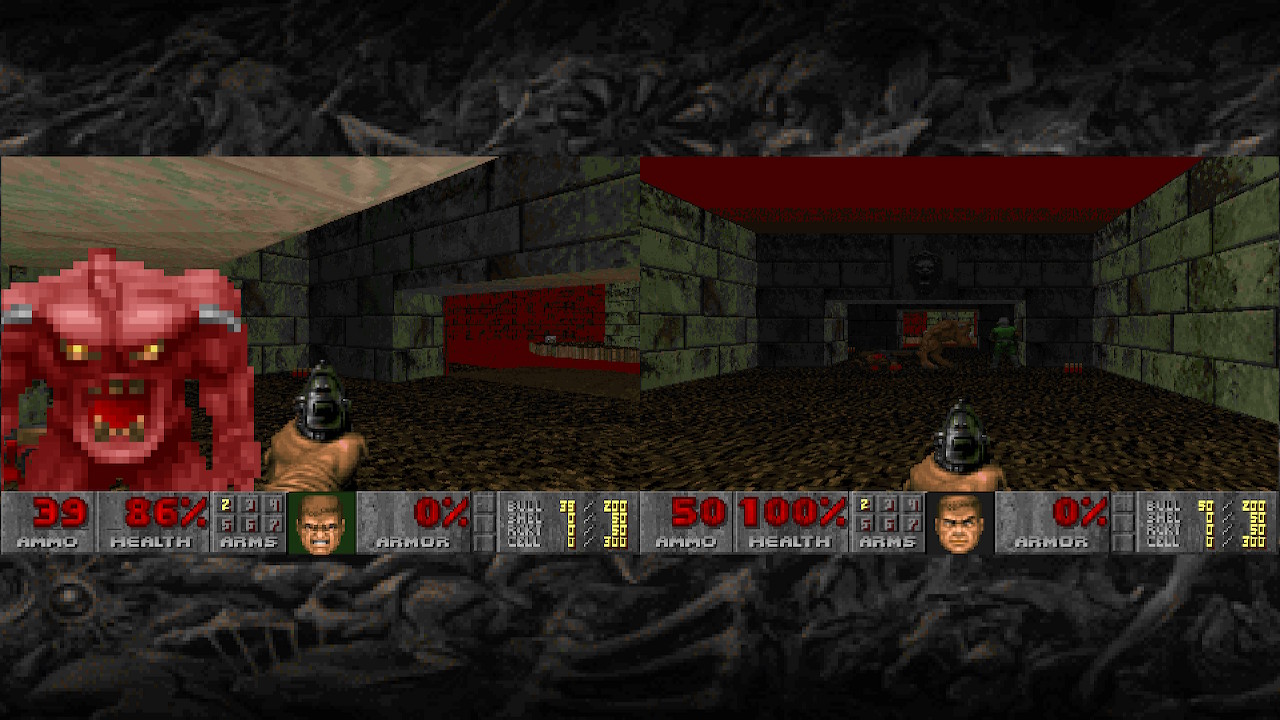
Final Thoughts
DOOM was an incredibly influential first-person shooter for its time. Its fast-paced action and stellar gunplay continue to stand the test of time nearly 25 years later. While it has definitely aged in other departments, I still believe DOOM deserves a certain degree of respect for what it accomplished. Exploring levels and defeating demons continues to be a great time on your own or with friends. DOOM on Switch is a great place to play the classic title on a TV or on the go. DOOM (1993) is available now on the Nintendo eShop for $4.99.
Review Copy Provided by Bethesda
